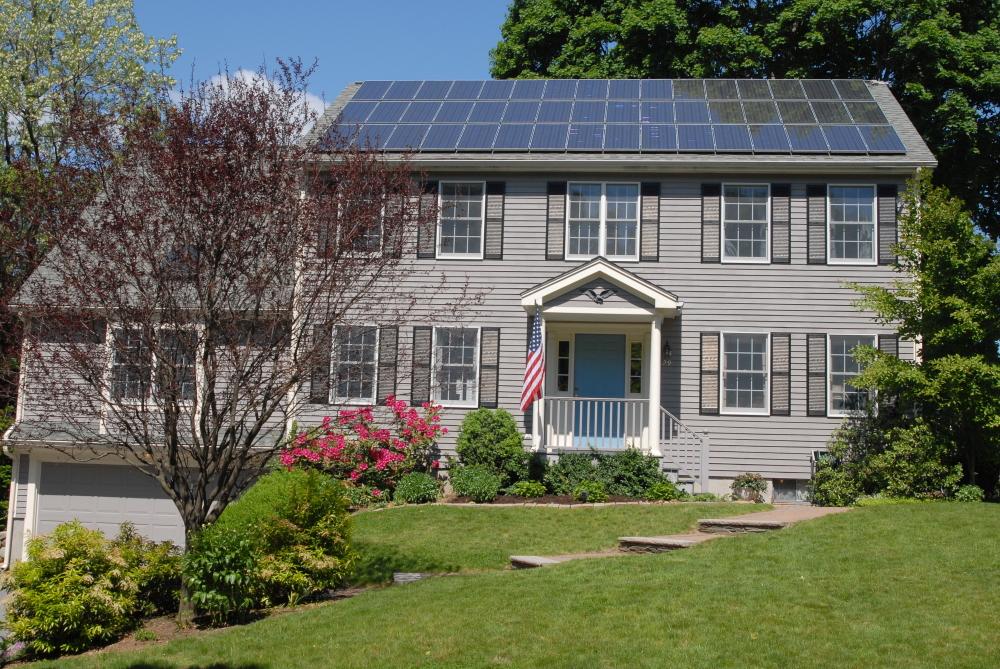Over the last 10 years, there has been a great deal of debate over residential solar and its impact on the value of homes. Up until recently, information was incomplete and most information on the subject was anecdotal. A new study led by researchers at Lawrence Berkley labs finds that a solar installation does indeed add significant value to homes.
Rooftop solar PV (photovoltaic) systems increased the sale of homes an average of $15,000, according to researchers led by Ben Hoen and Ryan Wiser of the U.S. Department of Energy’s Lawrence Berkley Laboratory’s Environmental Energy Technologies Division. Berkley Labs worked on the report in cooperation with researchers from Adomatis Appraisal Services, Real Property Analytics/Texas A&M University, University of California at San Diego, San Diego State University, and Sandia National Laboratories.

Their new study (entitled “Selling into the Sun: Price Premium Analysis of a Multi-State Dataset of Solar Homes”) found that home buyers are definitely willing to pay more for homes with a host-owned PV systems. Host-owned means that the system is owned by the property owner, not a third-party-owned or leased system. This study did not include information on third-party owned systems (but future research on the value of third-party-owned systems is planned for the future.) However, the study did cover eight states and various housing markets, PV markets and home types. The team analyzed nearly 22,000 sales of homes– almost 4,000 of which contained PV systems– in eight states from 1999 to 2013. This doubled the number of homes analyzed in previous studies and producing the most authoritative estimates to date of price premiums for U.S. homes with PV systems.
The researchers found that the “average premiums across the full sample equate to approximately $4/W or $15,000 for an average-sized 3.6-kW PV system. Only a small and non-statistically significant difference exists between PV premiums for new and existing homes, though some evidence exists of new home PV system discounting. A PV green cachet might exist, i.e., home buyers might pay a certain amount for any size of PV system and some increment more depending on system size. The market appears to depreciate the value of PV systems in their first 10 years at a rate exceeding the rate of PV efficiency losses and the rate of straight- line depreciation over the asset’s useful life. Net cost estimates—which account for government and utility PV incentives—may be the best proxy for market premiums, but income-based estimates may perform equally well if they accurately account for the complicated retail rate structures that exist in some states.”
“Previous studies on PV home premiums have been limited in size and scope,” says Ben Hoen, the lead author of the new report. “We more than doubled the number of PV home sales analyzed, examined a number of states outside of California, and captured the market during the recent housing boom, bust, and recovery.”
Interestingly, Forbes reported on an earlier 2011 report on the California real estate market Understanding the Solar Home Price Premium: Electricity Generation and ‘Green’ Social Status and found: “For the average installation, the authors found that solar panels added a $20,194 premium to the sales price of the house based on repeat sales data (houses were in the mid-$500,000 range). Solar is really expensive to install—the average total system cost is $35,967, but the effective price to homeowners with subsidies including the federal tax credit is $20,892. Thus, homeowners appear to recover approximately 97% of their investment costs – in addition to the savings associated with reduced energy bills.”
Reading the rather unimpressive report and the lukewarm response by Forbes only 4 years ago reflects the huge advances that the solar market is making as installed costs continue to drop. With more and homes featuring host-owned solar generation, the real estate industry is desperately in need of reliable methods to value the rapidly growing number of solar homes. The number of US homes with solar PV installations has grown to more than half a million, as of 2014.

“As PV systems become more and more common on U.S. homes, it will be increasingly important to value them accurately, using a variety of methods,” says co-author Sandra Adomatis, an appraiser who helped develop the Appraisal Institute’s Green Addendum and who has written and spoken extensively on valuing green features. She noted, “Our findings should provide greater confidence that PV adds a quantifiable premium to a wide variety of homes in California and beyond.”
The research was supported by funding from the U.S. Department of Energy SunShot Initiative. The SunShot Initiative is a collaborative national effort that aggressively drives innovation to make solar energy fully cost-competitive with traditional energy sources before the end of the decade. Through SunShot, DOE supports efforts by private companies, universities, and national laboratories to drive down the cost of solar electricity to $0.06 per kilowatt-hour. Learn more at energy.gov/sunshot.
Readers who would like to read more about the research and the findings can download the full 2015 report, “Selling into the Sun: Price Premium Analysis of a Multi-State Dataset of PV Homes”, as well as a fact sheets, and a summary slide deck here.





